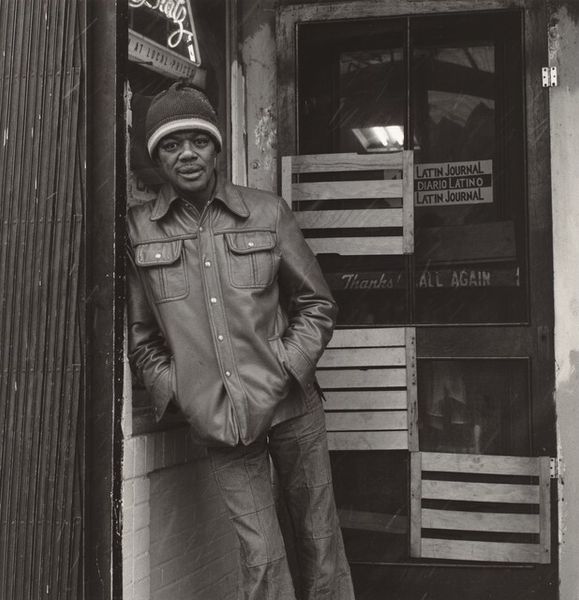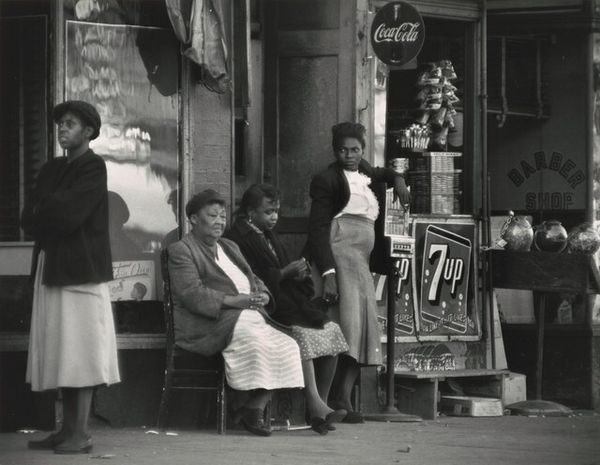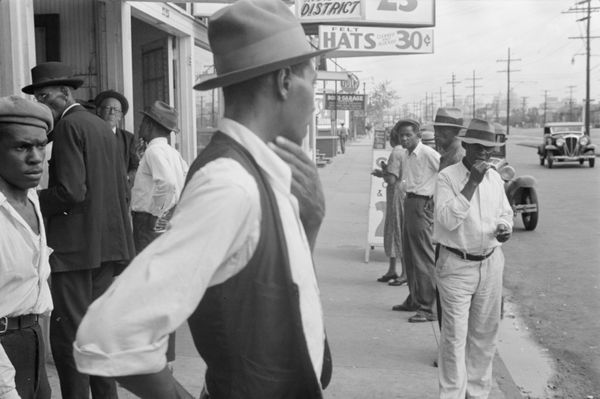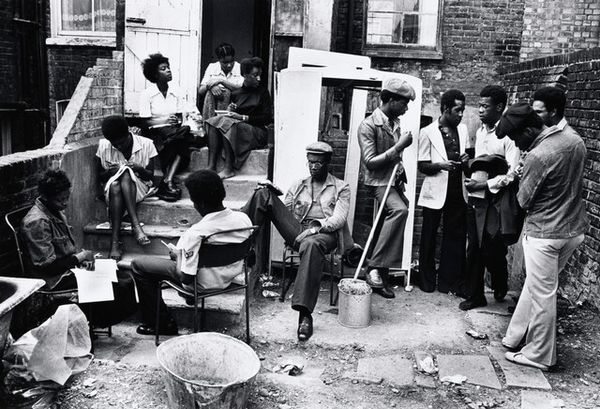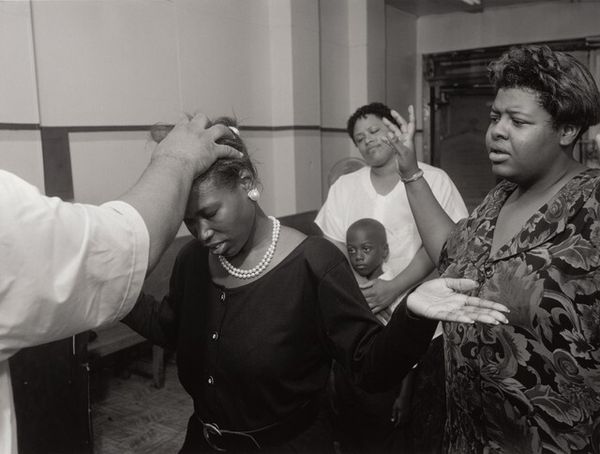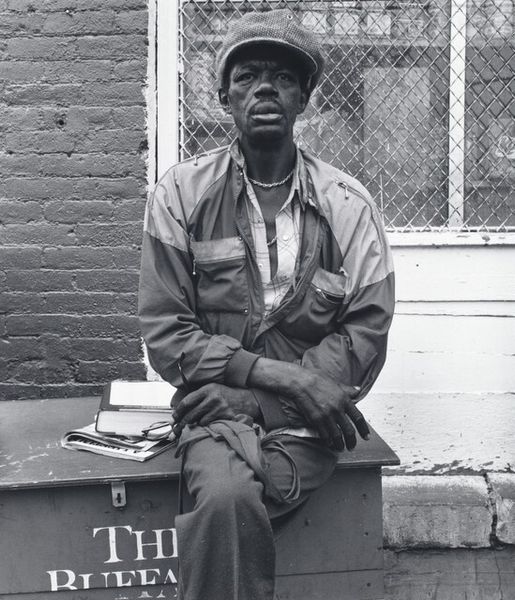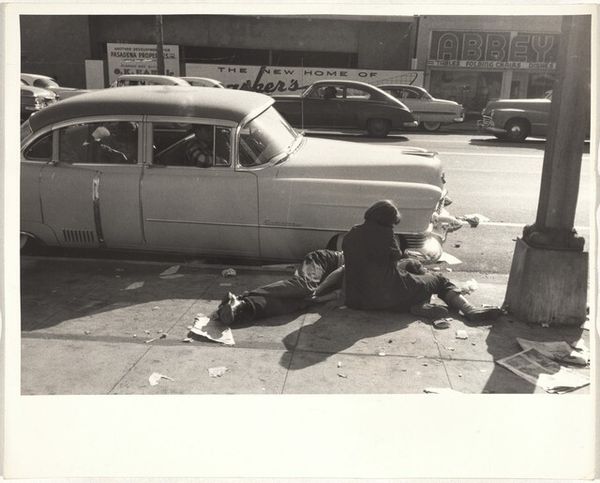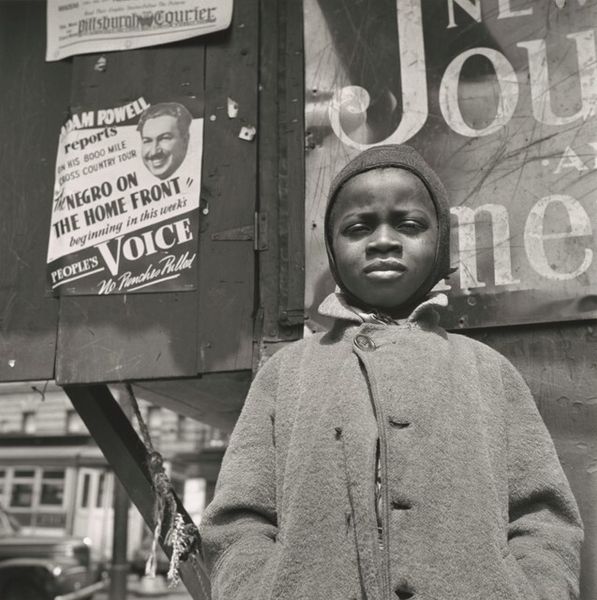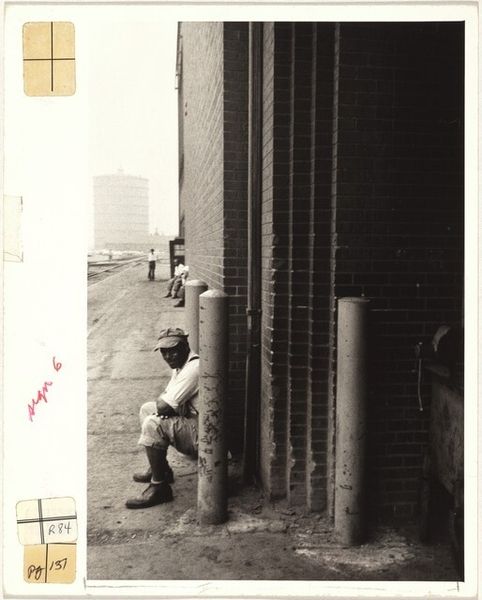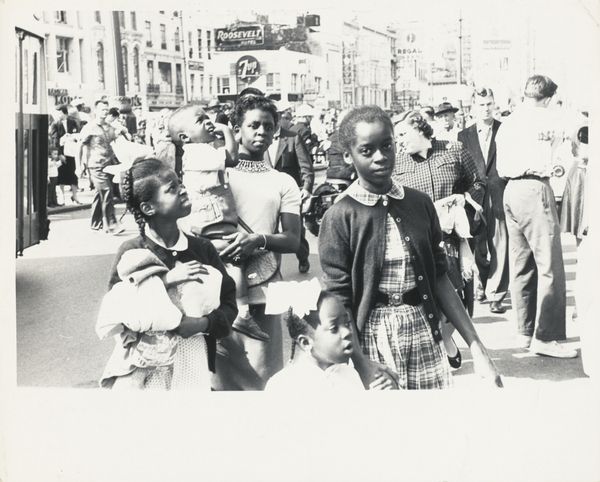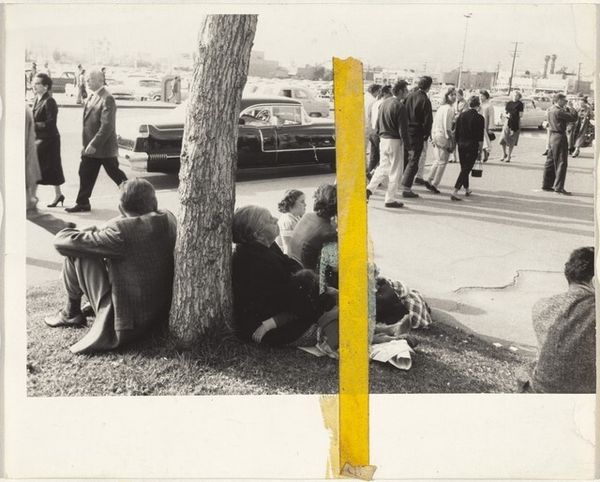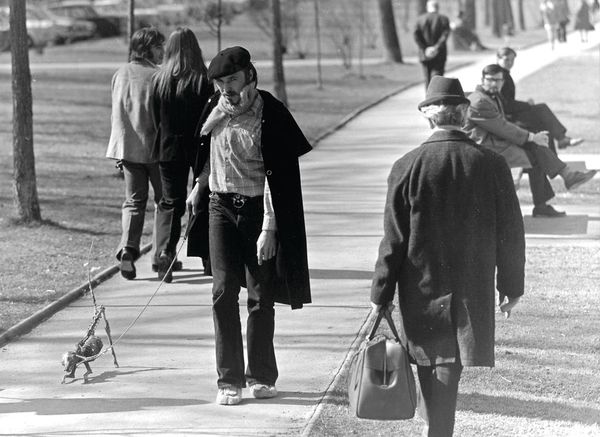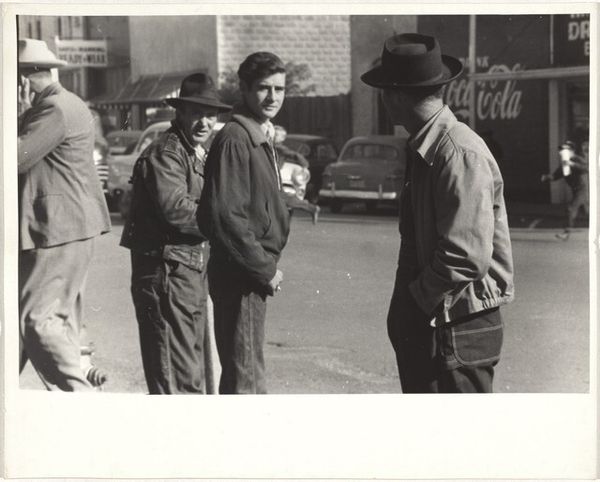
On a Saturday afternoon in the heart of Johannesburg, five Tsotsis mug a white man 1960
0:00
0:00
photography, gelatin-silver-print
#
portrait
#
african-art
#
figuration
#
social-realism
#
street-photography
#
photography
#
gelatin-silver-print
#
genre-painting
#
realism
Dimensions: image/sheet: 24.4 × 16.5 cm (9 5/8 × 6 1/2 in.)
Copyright: National Gallery of Art: CC0 1.0
Curator: Ernest Cole's photograph from 1960, "On a Saturday afternoon in the heart of Johannesburg, five Tsotsis mug a white man" captures a raw moment of violence. Editor: It hits you instantly, doesn’t it? The stark, almost brutal composition. The tilted angle makes the viewer uneasy. There's something inherently disturbing about the contrast of light and shadow, highlighting the chaotic energy of the scene. Curator: Indeed. Beyond the pure visual impact, it's crucial to consider the broader context of apartheid in South Africa. The image becomes a potent symbol of racial tensions and the social disparities of the time. The figures, the "Tsotsis" as they’re named, become symbols of systemic oppression and its effects. Editor: That's where the semiotics get fascinating. Consider the spatial relationships. The white man, fallen on the ground, is visually dominated by the towering figures surrounding him. It's a reversal of power dynamics. The repetition of vertical lines in the background–those gridded windows, for instance–visually reinforce the sense of confinement and constraint, for everyone. Curator: Absolutely. And the choice of a gelatin silver print further underscores this rawness, mirroring the stark realities faced during that time. It's a medium that allows for such deep contrast, amplifying the harshness. The visual narrative becomes indelibly linked to cultural memory. The composition might even symbolize larger structures of injustice… Editor: You see those geometric patterns on the shirt of one of the figures? How that single area complicates and interrupts an otherwise grim scene? I would venture to guess it adds a sense of humanity to it. It forces you to regard each figure as individuals instead of archetypes, pushing against narrative closure. It introduces visual tension and breaks the pattern of the dark windows on top. Curator: A fascinating point! To me, that small disruption doesn’t resolve any tension, but the point on individualism amidst the social landscape is poignant. It allows the photo to act as a symbol of an extremely fragmented community. This work carries complex symbolic meaning about human interaction amidst chaos and it’s important for that narrative to live on. Editor: And visually, its inherent formal tensions—darkness and light, order and chaos—create a deeply unsettling, memorable artwork. It’s stuck with me, that’s for sure.
Comments
No comments
Be the first to comment and join the conversation on the ultimate creative platform.
